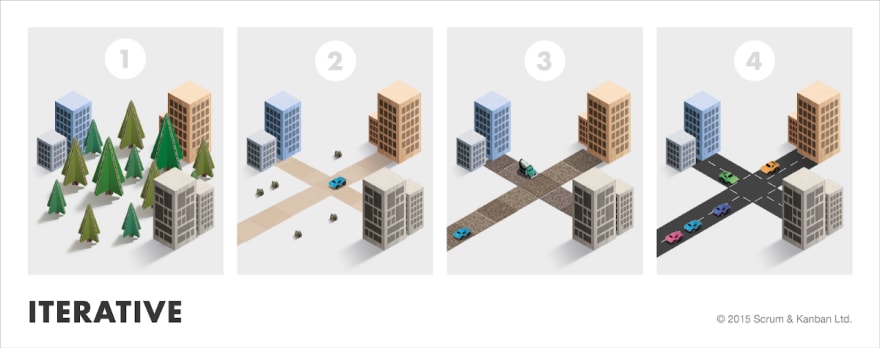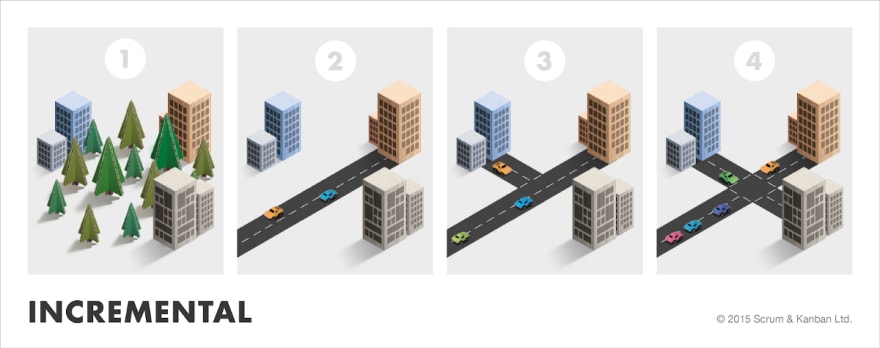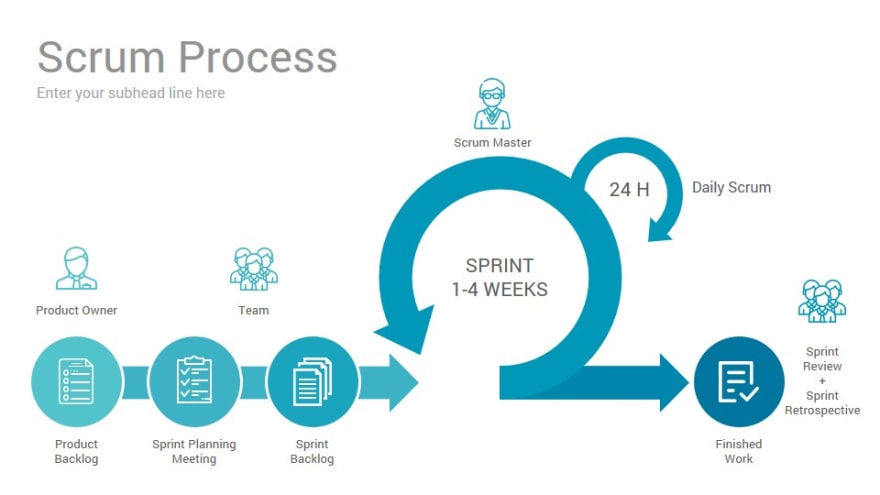Learn how to incorporate this agile methodology to enhance your work performance. Here are some popular tools and recommendations for integrating agile philosophies' elements into your work.
Scrum methodology can help either large or small teams to achieve their work goals, satisfy their clients and develop a better team relationship. But, how?
First of all, let's review what Scrum is.
Born for software development, Scrum is a framework within which people can address complex adaptive problems, while productively and creatively delivering products of the highest possible value. This means, usable and worthy products, in which progress is acknowledgeable. Scrum employs an iterative, incremental approach to optimize predictability and control risk. Three pillars uphold every implementation of empirical process control: transparency, inspection, and adaptation.
How does it work? Easy. You probably already apply scrum philosophy on your work with small differences or by calling it with different names. It's all about organizing work based in the previously specified objectives or goals. Two Scrum elements you can easily incorporate into your work management are:
Defining a Product Backlog: these are the objectives and scope of the product or service to be developed. What you want to achieve, based on the budget and customer needs.
Organizing work into Sprints: each of the phases of the project where the advances are presented to the client. This proves it as it is and suggests changes. These receive a priority according to their importance, and become urgent or are assigned to a second backlog. Dividing the product into sprints will help you reach the desired product through recurring iterations.
Another important part of the Scrum Methodology are team members and their roles. The Scrum Team is divided into three parts:
Product Owner: is the person who knows the business best and decides what improvement or task has to be done in each sprint. It is the channel between managers, investors, clients and development team. Being the person who knows the market and the product best, he/she is the one who makes the final decision.
Development Team: it is recommended to be integrated between 3 and 9 members. It has to be a multifunctional team with defined internal roles required to get the job done (Frontend developers, Backend developers, QA). The interesting thing about this team is its self-management. They themselves decide the work done in each sprint (based on the priorities defined by the Product Owner), and they themselves decide how to perform each of the tasks. It is a team work, without hierarchies.
Scrum Master: being a process that comes out of the ordinary, it is normal that there is resistance from the company or from the Scrum Team members themselves. This is where the Scrum Master comes in, to ensure that everyone follows the process correctly, gives continuous coaching when there is a blockage and eliminate any impediments that arise throughout the sprint.
Depending on the size of your company and team members you can easily adapt each role and its functions. For instance, maybe in small teams Scrum Master and Product Owner tasks can be handled by a Project Manager.
It's essential that all employees are aware of the adopted methodology and its advantages. Giving a workshop explaining how it works and how your company will put it into practice is a great starting point. This may be a very important first task for the designated Scrum Master.
Also, meetings are crucial. Depending on the team size, meetings can be daily, weekly, or one per sprint. It's a matter of trying what's best for each team. However, it is highly recommended to share individual progress within the team on a daily basis. These are two of the Scrum meetings to get inspired by or try implementing:
Sprint Review: is held at the end of the Sprint to inspect the Increment and adapt the Product Backlog if needed. During the Sprint Review, the Scrum Team and stakeholders collaborate about what was done in the Sprint.
Sprint Retrospective: is an opportunity for the Scrum Team to inspect itself and create a plan for improvements to be enacted during the next Sprint. Often occurs after the Sprint Review and prior to the next Sprint Planning.
Moreover, to start improving your performance, any agile methodology requires of some basic tools in order to get an effective comunication between team members and get the work done. Here are some of the most popular ones:
Trello, Jira: get a better project control with a Trello or Jira board, organizing board columns based in the Kanban Methodology: organize work into Backlog, Doing and Done. This way, each card is a task to do, running or finished, helping the team know at a glance the project status and pending tasks. Kanban is widely used within the Scrum methodology, although it also works outside it independently. You may also add more columns, for other stages such as QA, In review and even one for each sprint.
Jenkins: a type of open source software, Continuous Integration oriented. This allows to approach different goals such as early feedback, avoiding merge hell, enabling merciless refactoring among a team and ensuring working software.
Git: another very standardized software to use agile methodology in programming. Besides the benefits of flexibility and distribution, there are key functions of Git that support and enhance agile development. Changes can get pushed down the deployment pipeline faster than working with monolithic releases and centralized version control systems.
Hope you found this useful! Do not wait and start getting great results by incorporating some elements of this agile methodology in your projects.
Source:
- https://www.scrumguides.org/scrum-guide.html
- https://hablemosdeempresas.com/empresa/conceptos-basicos-agile/
- https://blog.muktek.com/scrum-para-principiantes-qu%C3%A9-es-y-c%C3%B3mo-funciona-ec1eb8a70702
- https://www.atlassian.com/agile/software-development/git
- https://www.agilealliance.org/jenkins-you-can-take-the-evening-off/
...
More about Eudaimonia: https://www.eudaimonia.com.ar










Top comments (0)